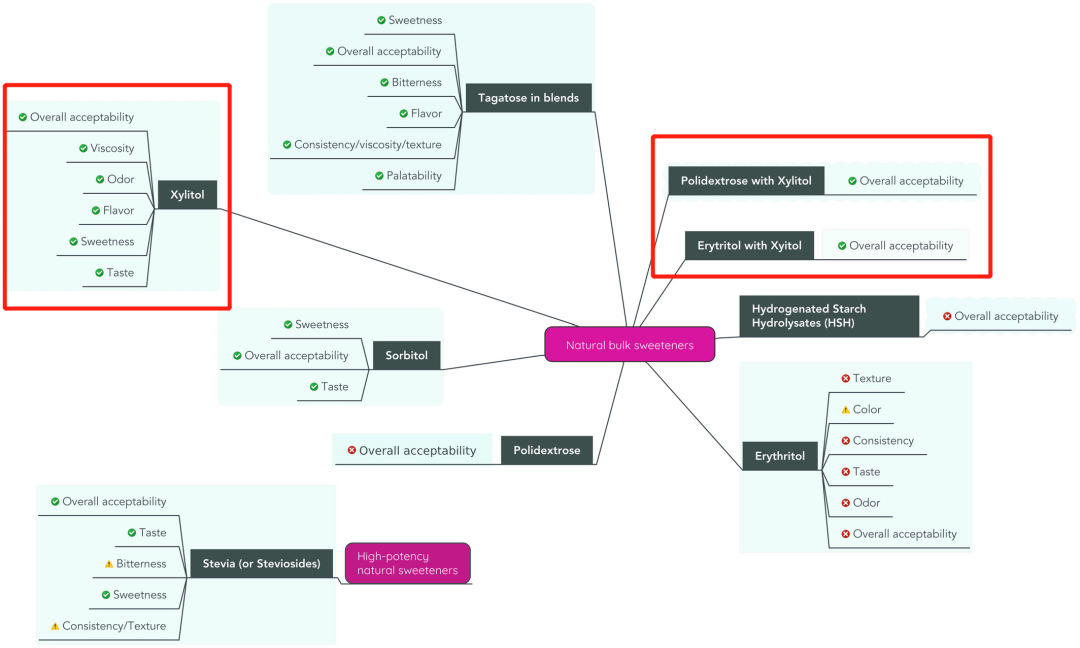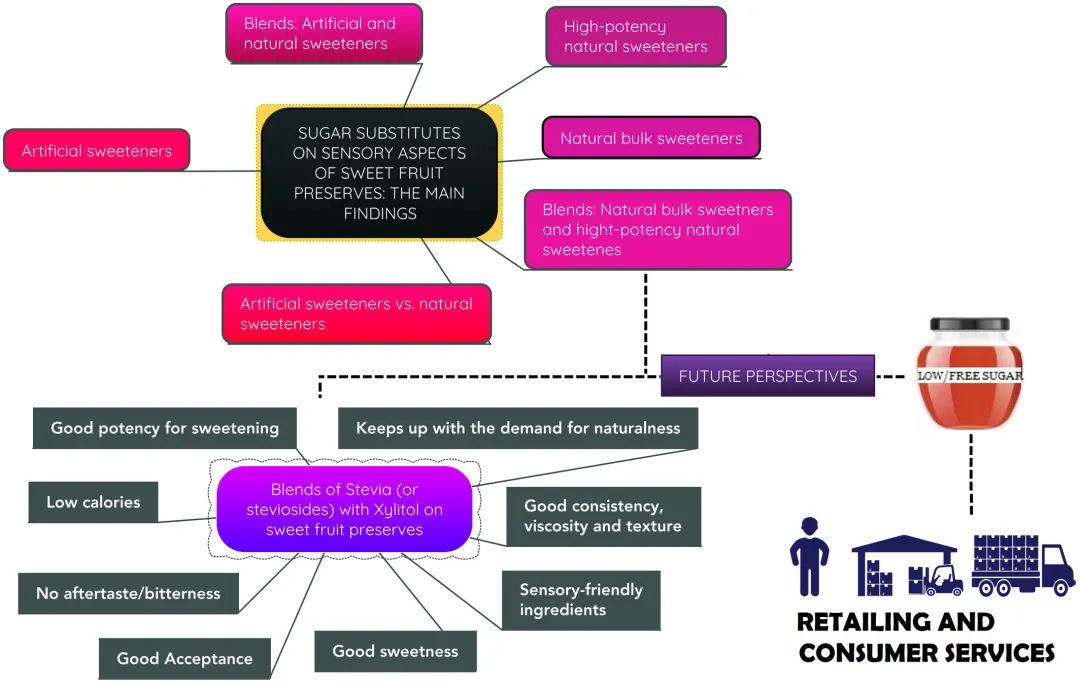Feb. 20, 2023
From a jam jar, scoop out a spoonful and smear it on bread or cookies, and it has a wonderful chemical reaction with your brain and makes you feel happy. But the feeling of happiness is often followed by "guilt" because more than half of the jam is probably sugar!
Since sugar ensures the shelf life, consistency, and flavor of jams/preserves, it cannot be easily reduced, and there are technical and sensory challenges in partially or completely replacing sugar with sweeteners. Among the many sweeteners available on the market, xylitol can provide the desired sensory properties for jam/preserves products.
Naknaen and Itthisoponkul (2015) evaluated the effect of 0-100% xylitol replacing sucrose on low-sugar cantaloupe jam using samples made from 100% sucrose as a control group. The results showed that increasing xylitol content improved the brightness and spreadability of the jams, with no significant differences in total phenol, vitamin C, and β-carotene content, but antioxidant capacity decreased with increasing xylitol content. There were no significant differences in sensory characteristics between 100% sucrose samples and samples containing 25% and 50% xylitol. Therefore, it is recommended that xylitol can partially replace sucrose (up to 50%) for cantaloupe jam production.
Benedek et al. (2020) investigated the effects of xylitol and erythritol on the phytochemical factors, antioxidant properties, and sensory of blackberry jam. The results showed that xylitol had a positive effect on the overall odor intensity, flavor, and anthocyanin degradation rate of blackberries. Although erythritol performed well in maintaining the attractive red color, its other sensory attributes (taste, odor, and texture) lagged behind sugar or xylitol. Therefore, considering the positive effect of xylitol on anthocyanin decay and the fact that sensory scores are not significantly lower than sucrose, xylitol is considered a good sugar substitute in jams.
Farias et al. (2019) evaluated the role of erythritol, sorbitol, xylitol, and polydextrose in the preparation of preserves from a Brazilian Cerrado fruit blend. It was found that the formulations with xylitol and sorbitol as pure ingredients scored the highest in terms of taste, sweetness, and overall impression, and the higher the percentage of erythritol samples in the sweet fruit preserves due to their white crystalline color, the lower the consumer preference for color and viscosity. Polydextrose was less effective alone and more effective with xylitol, reflecting its synergistic effect on flavor and sweetness attributes positively. Although erythritol and polydextrose did not work well in samples either alone or in combination and are not suitable for use as pure ingredients in formulations, they can be added at lower concentrations and used in combination with other polyols, especially xylitol. Xylitol and sorbitol are considered good substitutes for sucrose in the development of Brazilian Cerrado mixed fruit preserves because of the better organoleptic acceptability they provide.

The high application potential of xylitol cannot be denied as the products with xylitol either alone or in blends have good consumer acceptance. In addition Tagatose mixture, sorbitol, steviol glycosides, etc. also showed relatively good results. Although some sweeteners are not effective when applied alone, they can be used in combination with xylitol to achieve synergistic effects and better results. The right sweetener compound can play a good synergistic effect, such as steviol glycosides with xylitol, which is a very promising alternative.

We are a xylitol supplier. If you are interested in our products, please contact us now!
